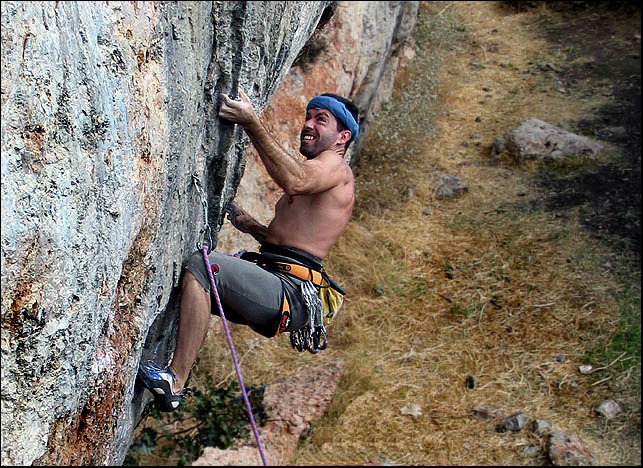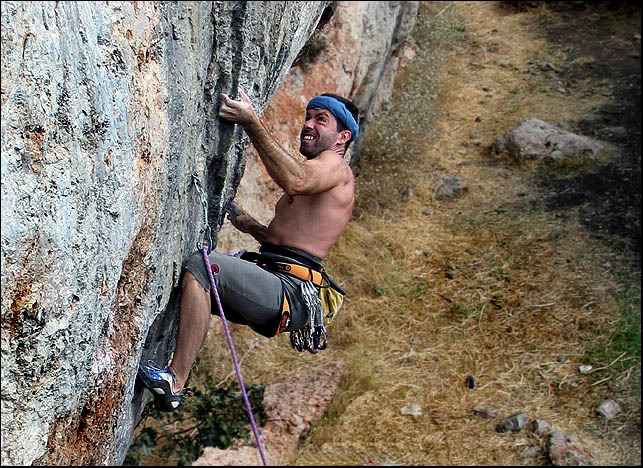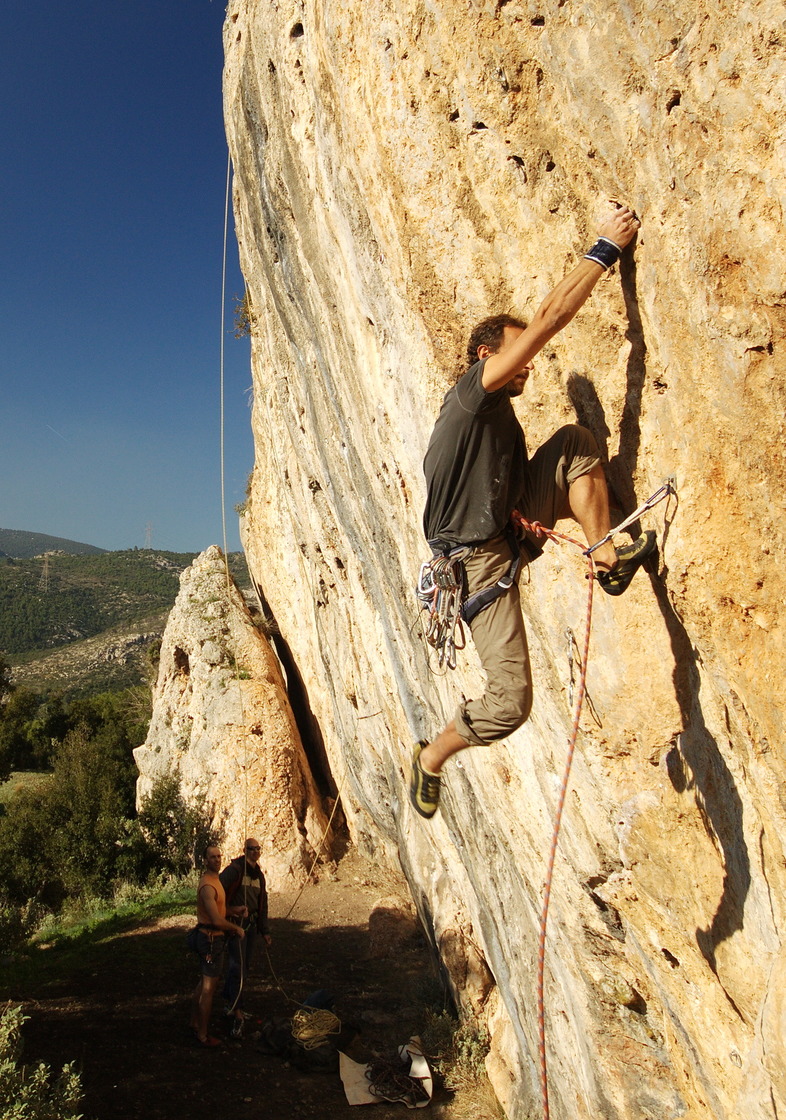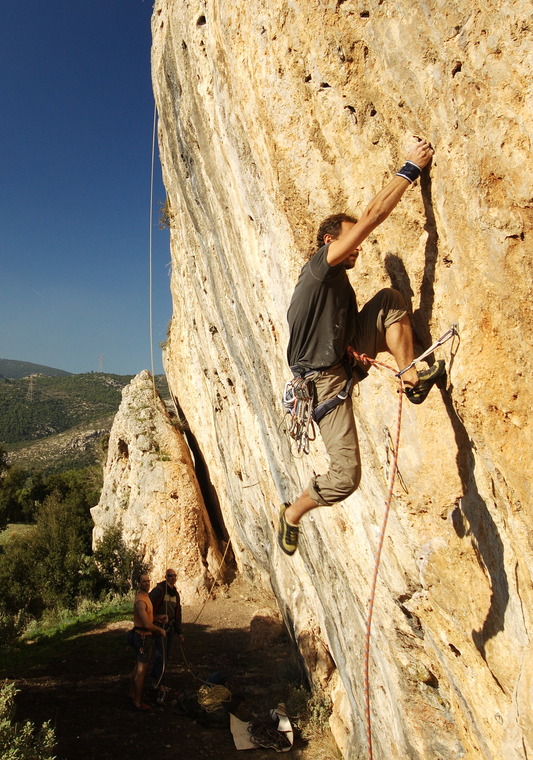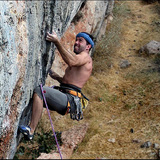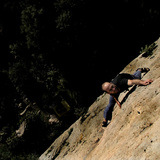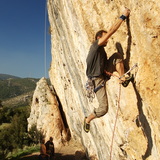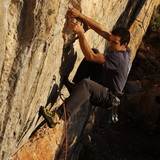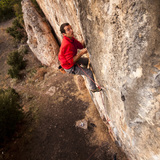Mikri Varasova (Greek for “Little Varasova”) is a crag name devised by climbers to point out the apparent resemblance of the rock to that of Varasova, one of the most important seaside climbing destinations in Greece. Although in terms of scale it’s only a miniature of the real Varasova, in terms of quality, variety and aesthetics the place holds many pleasant surprises to the visitor.
Mikri Varasova has two main sectors but there are also a few climbs and open projects spread around on adjacent faces. The style of climbing is considerably different from one sector to the other. The left side of the crag is a slightly overhanging wall with short dynamic routes and pumpy moves on pockets. The right hand side is a beautiful 30m clean vertical slab with small razor sharp pockets and crimps that calls for delicate climbing, fingery extravaganza and in some cases a cool head.
Provided the skies are clear the place is warm and pleasant to climb even in very low temperatures. On the other hand, climbing during the summer months is nearly impossible as the rocks are scorched by the sun after 11:00 am.
All but one route in Mikri Varasova are fully equipped and only a 60m rope and quickdraws are required to repeat them. Despite recent rebolting, bolt placement in some of the old routes remains “old school”. Take a step back and use your good judgment to avoid decking.
